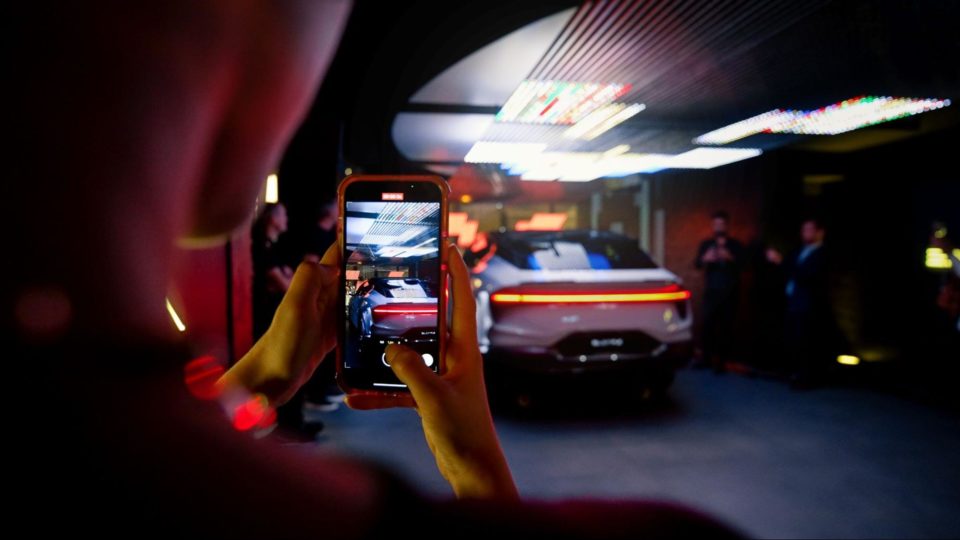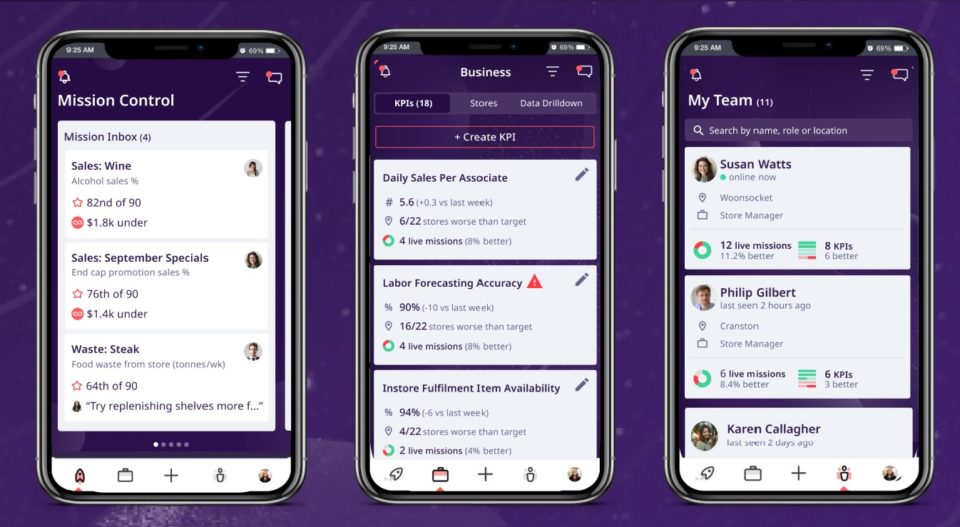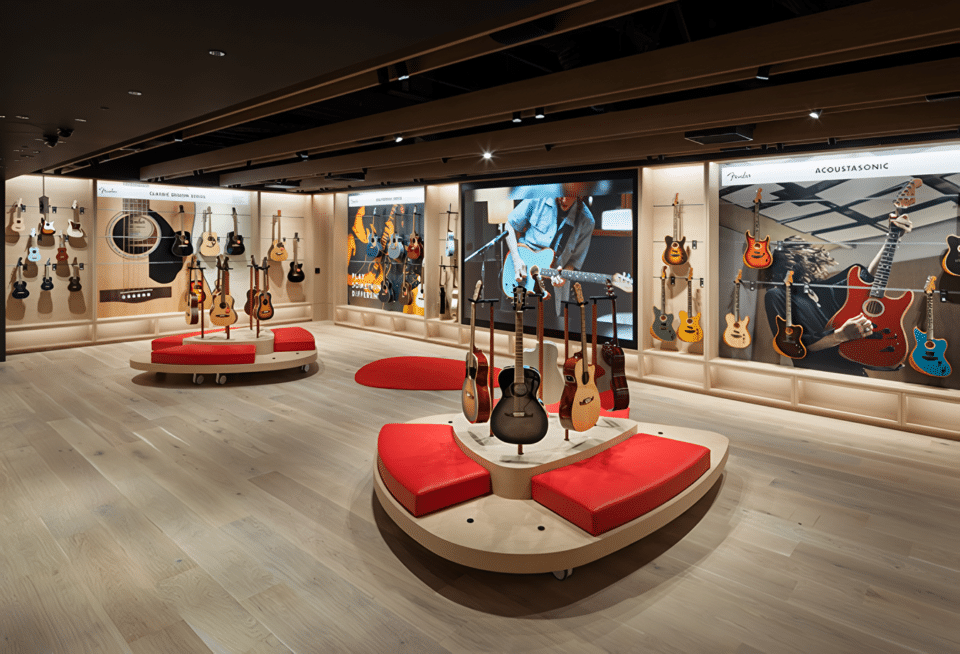On the shoulders of giants: how Fujitsu is helping retailers get a technological leg-up

Fujitsu is a giant of the IT world. Its long history in IT equipment and service provision means it knows a thing or two about technological development and helping companies implement this in their own businesses. Which makes it the perfect partner for retailers trying to figure out how to move their businesses into the here and now.
With Fujitsu’s annual World Tour event well underway, we spoke to David Nicholls, CTO Retail and Hospitality, Fujitsu UK, ahead of the London date to find out which projects are making the biggest difference to its customers and how new developments are creating better results for retailers.
Can you tell me a little bit about your role and what the Fujitsu retail and hospitality department are working on?
I’ve been in my current role for a little over three years. Prior to that my role was in solution design with an emphasis on customer engagement, primarily in the retail sector, but not exclusively.
One thing that I increasingly found is that our customer conversations were fundamentally changing and we were talking more and more to the business side, rather than just IT. We realised that these businesses are very much focused on their challenges – sometimes investigating how they would resolve those challenges themselves, sometimes looking for support in those challenges. It’s less about the technology and more about how you deliver the outcome back into the business.

First and foremost, Fujitsu’s heritage is an IT organisation, but I think the way that the whole market and the industry is going is becoming more focused on delivering the business outcomes. So that means driving up operational availability, increasing revenue or whatever that customers’ particular challenge might be. For me what’s paramount is before we even look at whether we can solve the challenge is whether I can quantify the value of solving that challenge because it’s all down to measurement in one form or another. If I can quantify and measure it then I look into our own internal organisation to see whether we can solve that problem using our own capability or if it requires a specialism from one of our partners.
Outside that I spend a lot of time talking to advisers, the market and working with our international teams to really understand what trends we’ve seen in the marketplace, what disruptions we see, whether it be technology or market-based, and how people are responding to that. A positive of the role that I’ve got within Fujitsu is that there are people like me that sit in other industries from transportation to automation to finance. They’re seeing trends in their marketplace as well, so we share information across those different industries. There’s quite a bit of hunger in my customer base to understand what other sectors are doing, what problems they’ve seen and how they’re responding to it, and taking learnings from that into their own businesses.
Is there a physical bricks-and-mortar element to all the clients that you’re helping?
We cover both retail and hospitality, so anything from more budget hotels to quick service table restaurants, but they all have a physical presence. The focus for us is on the store. Fujitsu is known for its ability to support store operations, but we also recognise the need to build solutions that link into online transactions and into the supply chain.
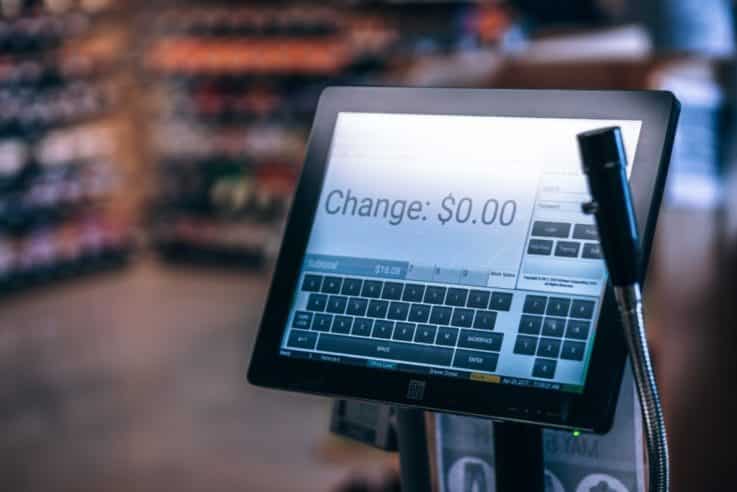
What sort of project do you see making the biggest difference to a clients’ results?
We’re working across a number of areas. What we tend to find is that looking at the headwinds that the customer is facing, first and foremost cost is a big challenge at the moment for bricks-and-mortar retailers.
Much of the budget that they have is going into supporting very low prices to customers and not a lot of it is being reinvested back into upgrading the infrastructure. In some cases this is considered to be a luxury unless it can provide material step-change in that business. We also see that customers want projects that can either deliver an in-year saving or at worst case an ROI of less than 18 months. That controls what you can do. It’s very much looking at the here and now and how you can create that step change in the way that customer is operating.
I’m a great believer in that there’s still a lot to do in stores to drive operational efficiency. As such, we focus on a number of key areas. The first is the customer experience and making that more personalised and relevant to the engagement the customer has with the brand or retailer. Secondly, we drive operational efficiencies in-store. We recognise the three biggest costs in store are labour, shrinkage, whether it be loss and waste from overproduction or too much perishable waste in store, and energy costs. This will soon become the second biggest cost as the UK starts its decarbonisation strategies. Energy costs are forecast to double again in the next decade.
One of our customers consumes about 1% of the UK energy output so their bill is about £350 million. If that doubles how do you deal with that? You could pass that cost on to customers but you’re in a competitive environment, or you could absorb that cost yourself but margins have been eroded and you’re not a charitable organisation. If anything what you’ve got to do is innovate your way out of that.
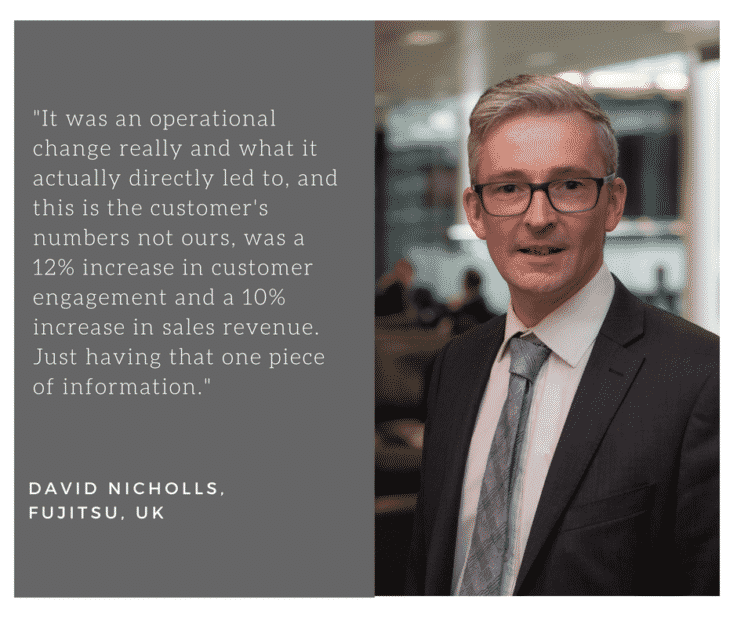
Shrinkage is a big problem across a store but we’re really focused on loss at the point of payment, especially stock loss around non-scans. This is a problem that loss prevention teams or asset protection teams really have got no visibility of. If you’ve got no visibility of it, you can’t measure it, you can’t control it. Non-scans are effectively items that are on the belted checkout or go to the self-checkout and they don’t go through to the POS system. It may be presented to the POS but then going directly into the banking area because of a damaged label on a product or fraud for example.
We can detect those and we can see when that error is taking place and then we can take action in real-time. In particular at self-checkout we can suspend the transaction to allow the colleague supervising to intervene. It could just be error, but if somebody was trying to commit fraud it just lets them know that it’s been detected and there are systems and processes in place to show that’s been detected. That technology is in place in the US with a number of large retailers and we’re running trials with a number of European retailers with that same technology.
We’re also taking it a step further as we’re using object recognition. We’re linking into the transaction log and the CCTV systems that customers have already got, so they’re maximising their investments in those infrastructures, and using those feeds to do object recognition. Product substitution is one issue this tackles where high value items like meat, health and beauty products and alcohol are presented and put onto the scale, but the customer then selects the likes of produce so the item gets weighed as carrots for example. It then gets put into the bagging area and therefore it circumvents the weight databases security scale on the self-checkout.
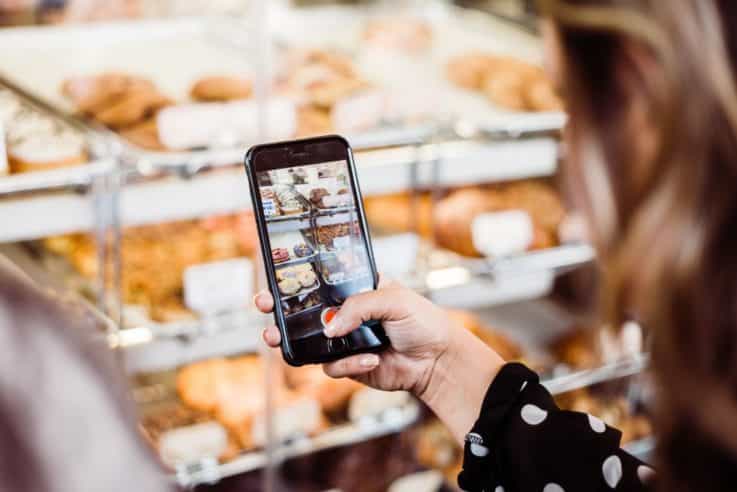
We’re looking at understanding the object that’s presented when the weight database is activated to make sure it actually is carrots. The ability to visually tag the item and its movement through the transaction, and also the ability to do object recognition allows us to detect that type of fraudulent activity and again intervene in the transaction. We can use data in real-time to change what’s happening instore.
Another good example is we’re also doing some work with age verification and we have a couple of retailers trialling this at the moment. We’re using photo analytics to look at automating age verification of age restricted goods like alcohol at self-checkout. We recognise that generally 80% of people coming through the checkouts are over 25. At the moment we’re having to visually approve each of those people that are buying age restricted goods. We’ve developed algorithms that we integrate into the self-checkout process to accelerate the scan-to-pay time through those lanes by using photo analytics. Not only do you get a better throughput through the lane, but we create the audit trail and we try to make it a better experience.
We always try to give something back to the customer. It is an exchange to make them aware that the technology is being used. but actually we all want that immediacy and speed of transaction so sometimes we’re happy to trade that for the fact that they may be using photo analytics to do that.
We don’t store any data. We don’t know who you are. It’s all very anonymous but it allows us to accelerate that. For us it’s all about driving efficiency instore. Using that automated workflow you can take the load off the colleague, particularly in that self-service area. It can be quite draining as it can be an area to engage a customer or it can be an area where you get friction with the customer, particularly when they’re having trouble scanning items, so we just try and make that easier for the customer and easier for the colleague.
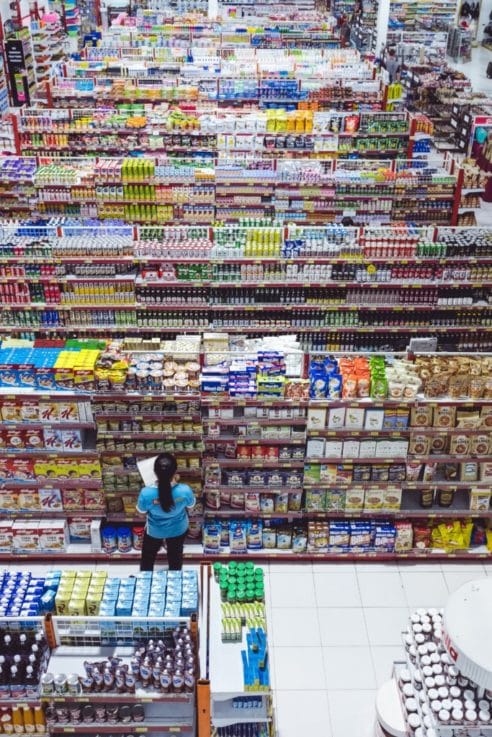
What areas are you concentrating on at the moment?
One thing that we’ve found is that there’s five core systems irrespective of the retail subsector that you work within that are important. These are transaction systems like POS and payment systems, CCTV systems, digital content management systems, LAN and Wi-Fi networks, and then burgeoning investments in sensors and IoT equipment. Generally, we’ve seen that percolate into those retail environments through technology refreshes and the plant and machinery that is going into those stores is now by default intelligent. It’s been connected to the network and is producing data. The sixth system that we see is the drive to more productivity instore.
In the past if you needed information you either carried a handheld terminal and mobile phone and a two-way radio with you or you went to a point of payment. Retailers recognise that colleagues instore need information at their fingertips. They’re dealing with customers in the aisle, they’re doing operational activities in the aisle, so they need the information in the aisle. So retailers are starting to give those colleagues mobile multifunction devices and that means for the first time actually in a store you can start talking to your colleagues directly and managing them.
That’s important because what we do with those five core systems is we link them together. The data in those systems historically has been very much siloed. Sometimes it’s come out of the store like transaction data and payment data, but the CCTV system for example sits instore and you can’t do anything with it. A lot of the sensor or IoT data sits instore.
We link that data together and apply software analytics and artificial intelligence to create new insights for the retailer and better ways of working for the store colleague. Some of the stuff that we’ve been doing is building customer insights for our clients because they want that personalisation with their customer and their customers want that level of relevancy and communication with a retailer.
Another example is that we do anonymous MAC address tracking of customers mobile devices in-store. This means we can see passing trade, time of day conversion rate, people coming over the threshold, but we also link that data into transactional data so we can see where people dwell with a promotion and did that convert into people buying that promotion at a point of sale. That’s all very good but that’s only one subset of data so we also link into facial analytics for people counting and age and gender recognition. So, on top of that dataset we can also build a demographic of the store.
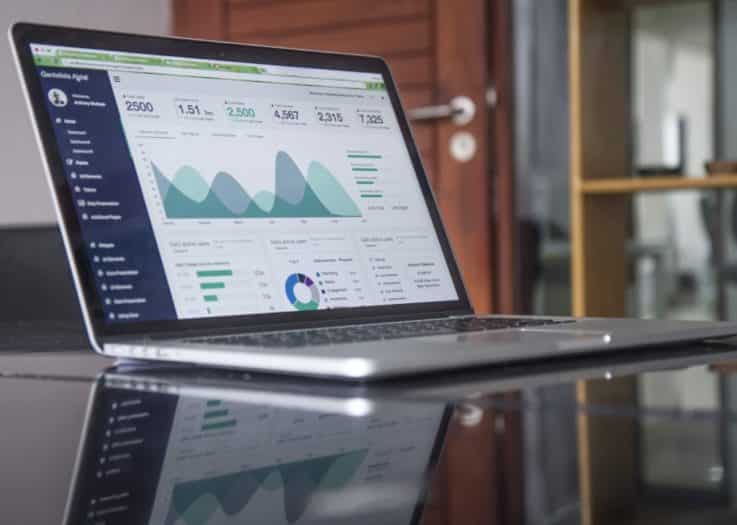
We had some recent success with the Isetan department store in Japan. What we saw was that store colleagues that stood on the periphery of the store had higher sales than colleagues that were in the centre of the store and we didn’t really understand why. We went into the store with the customer and talked to the store colleagues and the answer is blindingly simple. When we said why do you stand at the side of the store they said because we can see the customer journey, we can see what they were interested in and then where they went next. We can see the association between what the customer is browsing for. In the centre of the store you can only see where they are going to and not where they’ve been before.
It was an operational change really and what it actually directly led to, and this is the customer’s numbers not ours, was a 12% increase in customer engagement and a 10% increase in sales revenue. Just having that one piece of information. It’s just understanding those patterns of data, but it’s really important to have as many data points as possible.
We also have the interface and the technology to link into IoT sensor data. Knowing what the customer is doing instore is interesting, but why are they doing that and why are they leaving the store? It could be that there’s lots of queues in store or it could be that the store is too warm, or too noisy. If you start bringing all that data together it starts to give you a much richer understanding about what’s going on. You can never have enough data.
It’s interesting talking to different stakeholders as you get a completely different view of the technology as well. At Fujitsu World Tour last year we had a refrigerator system that had an opaque digital door so you could see the produce behind the door but you could also run digital promotions over the front of the door. We had a pizza promotion going on and we were trying to upsell them to go to the deli and buy the more expensive pizza. Everyone thought they were really interesting.
It wasn’t until afterwards, and we had to prompt them on this, that they knew they had been personally marketed too, because interjected into that advertising sequence was a piece of marketing that was targeted at age and gender. So if you were over 25 and a bloke you got a promotion around lager, if you were over 25 and female there was a push around prosecco and if you were under 25 it was a promotion around ice cream. They were just subtly dropped into the ad sequence. So, we were again using the same facial recognition technology to create that insight.
We’ve also been looking at driving operational efficiency around cash management as cash is still very alive in the UK market. While tap-and-go is certainly eating into that market share, we still have a lot of cash. It’s still the cheapest form of transaction in a store. It costs pennies to manage a cash transaction whereas it’s 25-40p for a credit card. The problem is cash is quite a manually intensive process. Cash can be touched anything between eight and16 times in a store before being handed over to the likes of G4S and every time you touch it there’s an opportunity for loss or error. It costs anything between eight and 10 pounds for asset protection to investigate the loss of one pound. So if you can reduce the loss then there’s clearly a consequential benefit back to the store.

Image credit: AdsReality
Are there any other interesting developments you’re working on?
We’re working with a company called Ads Reality, which is owned by GAME, on an interactive digital screen that the customer can control without needing to download an app on their phone. You can control what items are shown on the screen, which model wears them, add them to a basket and then purchase them. Why we think that’s important is that if you could put connect that to Exterion or Clear Channel, ie digital screens down the high street, then arguably it allows you to create a point of payment actually on the high street.
What drew us to the tech is that Ads Reality have created a little Wi-Fi network in the back of the screen so you just connect to that Wi-Fi to take control of the display. We thought it was genius because one of the biggest barriers for retailers is getting their app on the phone. A lot of our customers invested heavily about three years ago in mobile apps only for them to go completely under-deliver. They were downloaded, they spent a lot of money trying to get customer acquisition, they weren’t getting the customer acquisition and people were effectively deleting the apps after the first use. They were moving back to mobile optimised websites, and arguably what most retailers were doing on their mobile apps was effectively a version of the website anyway.
We thought about the tech and saw there was a way of linking the product file number to some digital visual content that effectively is my post transaction log. If I can capture it and I can interface with it, I can start selecting it and building a basket and if I’m building a basket then I can hand that off to our marketplace platform which effectively links into both in-store payment systems and online payment systems and brokers the transaction. Then I can actually take payment for that and direct that order to either a collection in-store or for delivery to a home address.
If I was looking at the demographic that would use this it’s generally millennials where they’ve got time to kill and want engagement. Fashion shopping you just can’t do on your mobile phone – it’s the wrong form factor. It’s ok for occasional use, but if you’re actually looking for something you want to see it.
We’re at the start of the journey though. We’re talking to a number of fashion retailers about what the screen might look like in their environment. We showcased the concept at RBTE at Olympia this year. We used it as an opportunity to get feedback from customers to see if they saw the value in it, whether their customers would see the value of it and how they saw the payment process working. That gave us a lot of insight into how we should structure the development of that solution moving forward.
One of the things that we find in the market is that it’s moving so fast and you can’t be a specialist in everything, so what we do is bring in partners like Ads Reality to work with us and support us. They’re partners rather than suppliers because we’re actually asking them to integrate with our technology and I think that type of co-creation requires a level of trust and openness. There will be an early concept of the tech at World Tour.
What else will you be exploring at Fujitsu World Tour?
The themes for World Tour are really about creating those engaging customer experiences, understanding who your customer is and making the interactions more personable and relevant. One of things that we’re quite focused on is that every point of interaction with the customer is effectively a possible point of transaction with the customer.
I think a lot of organisations are really struggling with the future of point of sale. The industry doesn’t really know which way to go at this moment in time. There’s a lot of organisations looking at different formats and trading models. We think though that all forms of payment will form part of your strategy, certainly for the medium term, because the expectation of the customer is that you give them the ability to choose how they want to interact with you. So, yes there will be POS, there will be self-checkout, there will be click and collect and we’ll also be creating new ways of interacting with the customer.
This includes linking online and store transactions which is what we’ve been doing with Fujitsu marketplace using those different channels with which customers are interacting with you. It’s interested to see how the market is shaping up and it’s quite an exciting time to be working in retail.
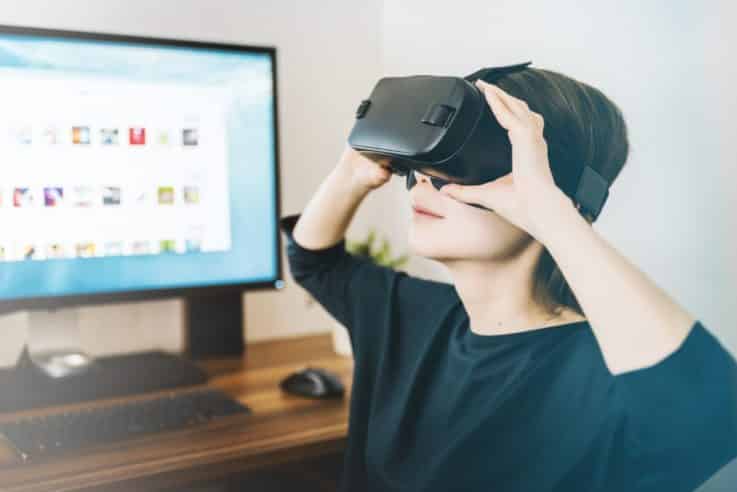
Are new developments in tech changing things at Fujitsu?
We’re using augmented reality and virtual reality in our own internal support services. This was developed by our service desk agents who found they had a problem with certain customers who were doing large-scale technology transformation in their stores, but the service desk agents hadn’t got the reference kit in order to be trained to do the diagnostics on that new technology. All the new technology was being prioritised to go into stores not into a support function.
So they 3D modelled all of the systems, the servers, the mobile devices, the POS system and then effectively trained on the virtual models of the technology. Then they took that a stage further and embedded the 3D models into the diagnostic script that they use when taking a customer through a diagnostic process. That helps visually understand what they’re asking the customer to do, so they can say it’s the red light on the bottom left hand corner for example. Then they took it another step further, and this is where it’s quite unique in the way we deliver service, and gave the same diagnostic to colleagues instore that had been given mobile devices.
We’re working with Argos at the moment on feedback of this concept, but essentially if you point the mobile device at the object that you’re having an issue with, for example a chip and pin card reader, it will recognise that object and give you the five top problems with that item. It will then walk you through those problems and overlay on the object using augmented reality what you need to press, where you need to check the connectivity and what you should be seeing on the screen. During that process in the back-end it will log the call with the service desk so you get a running order of how often that diagnostic is being used by the store. If it’s being used a lot for the same item, then there might be a problem with an object or system that has been deployed.
So, we create that link into service. It improves availability, it allows colleagues to do the diagnostic at a point in time that is convenient for them and it also provides lots of monitoring information. Also, if there’s a change to a diagnostic process then we can just download it to the mobile device and it’s instantly across the entire retail estate. We’re getting a lot of positive feedback from customers about using that.
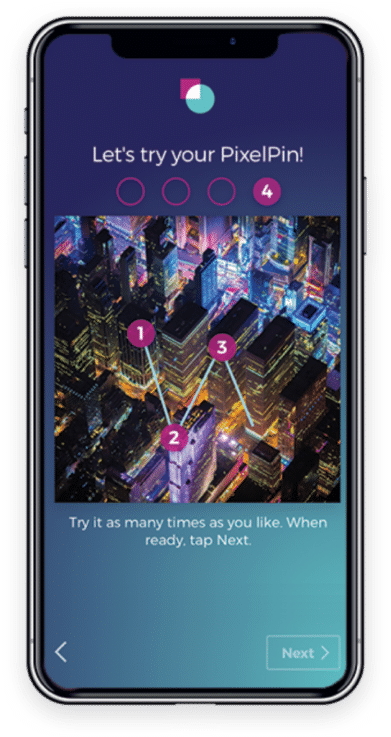
Image credit: PixelPin
What are the three tech companies that you are most excited or inspired by?
We are starting to do some work in Japan with a company called PixelPin who have created software-enabled two-form factor authentication using pictures to be able to provide that authorisation. Why is it important for customers? Most store colleagues have between eight and 10 passwords for different systems that they have to interface with. That’s far too many for anybody to remember. So they write passwords down and most of the time they’re stuck to the front of the PC. If I’m a supervisor I’ve probably got about 26 different passwords.
The PixelPin system is one password that can access all of those systems and I can’t write it down and I can’t give it to anybody because it’s a picture. From a security perspective it’s you that has accessed that system. We did some work with a number of banks in Japan and a number of mobile carriers where customers use the tech to access their account details.

Image credit: GoInStore
There’s also a company called GoInStore that we’ve had quite a lot of conversations with. They look at linking instore to online in quite an effective way. They recognise that you’ve got investment in labour in stores but it’s not necessarily 100% utilised. So you have people instore not serving customers because its quiet that day for example.
What GoInStore allows you to do if you’re a consumer looking at a product online is have a video session with a sales colleague in a store to talk through the product and engage with it. So, it’s actually using the store colleagues’ understanding, professionalism and product knowledge as a sales aid in trying to convert your online customer. Dyson are using that technology in quite an interesting way in their stores.

Image credit: TagItSmart!
The third is part of the European Commission Horizon 2020 investment project and is called TagItSmart! It is an intelligent principle tag to provide greater product information and allow product to start communicating with its environment. One of the areas of the project is printing QR codes using intelligent ink, so they interact with exposure to light and exposure to variations in temperature. You can imagine that if you’re looking at foodstuff in a chilled cabinet that the QR code would change colour when it warmed up.
In addition, when it changes colour the QR code actually changes its context, so it can then flag that this product needs to go offsale. It can either interact through data or visually the colleague instore can see that the item is spoiling and take it off the shelf.
The other reason it is important is that if people put something in their basket and then change their mind at the checkout that product can’t go back into the refrigerator cabinet. It has to go into waste because the retailer doesn’t know how long it’s been out the refrigerator environment and whether it has spoilt. They’re also looking at applications in fashion. There’s a big issue in fashion where people are buying items, wearing them with the tag still in them and then taking them back to the store and getting their money back. Having a QR code that interacts with light and heat means in theory you could start to detect if a product has been used.
Experience these ideas and more in person at the free Fujitsu World Tour in London on July 12th. We’ll see you there – don’t miss our Head of Trends Cate Trotter’s presentation!

